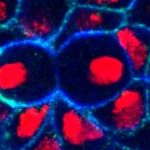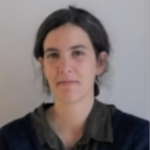Link to Pubmed [PMID] – 26898468
Link to DOI – 10.1016/j.cub.2015.12.069
Curr Biol 2016 Mar; 26(5): 616-26
Actomyosin contractility plays a central role in a wide range of cellular processes, including the establishment of cell polarity, cell migration, tissue integrity, and morphogenesis during development. The contractile response is variable and depends on actomyosin network architecture and biochemical composition. To determine how this coupling regulates actomyosin-driven contraction, we used a micropatterning method that enables the spatial control of actin assembly. We generated a variety of actin templates and measured how defined actin structures respond to myosin-induced forces. We found that the same actin filament crosslinkers either enhance or inhibit the contractility of a network, depending on the organization of actin within the network. Numerical simulations unified the roles of actin filament branching and crosslinking during actomyosin contraction. Specifically, we introduce the concept of “network connectivity” and show that the contractions of distinct actin architectures are described by the same master curve when considering their degree of connectivity. This makes it possible to predict the dynamic response of defined actin structures to transient changes in connectivity. We propose that, depending on the connectivity and the architecture, network contraction is dominated by either sarcomeric-like or buckling mechanisms. More generally, this study reveals how actin network contractility depends on its architecture under a defined set of biochemical conditions.

